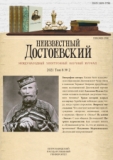Атрибуция в зеркале статистики: анонимные статьи в журналах братьев Достоевских «Время» и «Эпоха»
Attribution in the Statistics Mirror Anonymous Articles in the “Vremya” and “Epokha” Journals Published by the Dostoevsky Brothers’
Author(s): Olga Vladimirovna ZakharovaSubject(s): Media studies, Recent History (1900 till today), Computational linguistics, Russian Literature, 19th Century, Philology
Published by: Петрозаводский государственный университет
Keywords: attribution; G. Kjetsaa; Transformer neural network; Random forest; linguistic statistical analysis; F. M. Dostoevsky; M. M. Dostoevsky; A. A. Grigoriev; N. N. Strakhov; P. A. Kuskov;
Summary/Abstract: The attribution of content of Vremya (Time) and Epokha (Epoch) journals, in which many anonymous and pseudonymous articles have been published, presents many challenges for the researchers. In the XIX–XX centuries, a corpus of texts, which were unambiguously attributed to F. M. Dostoevsky, M. M. Dostoevsky, A. A. Grigoriev, N. N. Strakhov and other Vremya and Epokha authors, was formed on the basis of traditional documentary (letters, payroll, income and expense book, memoirs), ideological and thematic and stylistic evidence. The following types of texts were isolated within the corpus of anonymous and pseudonymous articles: author’s and collective articles, editorial inserts, notes; by type of writing — authorship, co-authorship, editing and adaptation of others texts. Modern methods of statistical analysis of formal grammatical and syntactic parameters in the text can provide sufficient grounds for expanding the source attribution base. This article presents the results of a study of a number of anonymous articles in the Dostoevsky brothers’ journals using three statistical methods of attribution: linguistic and statistical analysis according to the G. Kjetsaa’s method, the Transformer neural network and the Random forest algorithm. These results need to be correlated; they should be taken into account as complementary to traditional attribution methods.
Journal: Неизвестный Достоевский
- Issue Year: 8/2021
- Issue No: 2
- Page Range: 81-106
- Page Count: 26
- Language: Russian

